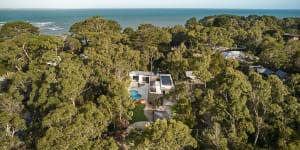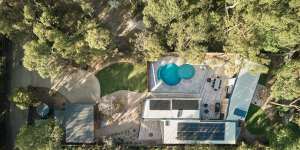But less than 5 per cent of homes built in Australia are prefabricated – and the federal government wants that to change.

Prefabricated homes like this one by Arkular in Victoria make up only a tiny part of Australia’s new-builds.Supplied
To address the housing crisis,it aims to build 1.2 million homes in the next five years.
Speaking ahead of a building ministers’ meeting on Friday,federal Minister for Science Ed Husic said prefab and modular housing could play “a big part” in getting homes built more quickly.
“That’s why I’ll be talking with state and territory colleagues about identifying obstacles that might be holding back the rollout of these types of houses,he said,

Christine McCorkell said councils and even planners within councils can have different interpretations of manufactured homes.Supplied
The major obstacle holding prefabs back is building codes.
Arkular,one of about 1800 companies in Australia producing prefabricated homes,offers high-quality but affordable houses thanks to streamlined processes and shorter build times.
“Prefabrication and modular construction methods also minimise waste production due to controlled environments and streamlining of resources,with off-site construction assisting in reducing noise and air pollution,” said spokesperson Christine McCorkell.
But the issue Arkular faces across the east coast and in South Australia is council regulation. Interpretation of what a manufactured home or a dwelling house is can vary considerably,which blows out the timelines for building approvals.

The industry says there are many benefits to prefab or modular-designed homes.Arkular
In their building ministers’ meeting,state and federal ministers will direct the Australian Building Codes Board to start working on streamlining regulations to encourage a boom in pre-fab housing.
Husic said it would be the first time governments had asked the board to devise a way to make it easier for the sector.
“Squaring up building codes with these advanced manufacturing processes could mean thousands more high-quality homes built every year,” he said.
Ministers will also be briefed on how prefabs could provide thousands more homes per year around the country,especially as they require fewer workers to build them at a time when construction workers are in short supply.
“Anybody who works in the industry knows just how difficult it currently is to get a house built,and how expensive it is to get built,” said Shannon Battison,director of architecture at Mill Architecture and Design.
“So I think that when we do have such a drastic housing shortage,we really should be looking to utilise all of the different kinds of tools in our belt,so to speak,and prefabrication would be a huge part of that.”
Battison said her firm already used some prefabrication in building frames,which helps make construction more efficient on-site,and many companies were starting to look at what elements could be made off-site,such as walls.
“One of the things that we find is that anything we can do to make things simpler on-site tends to mean that we get a better result for our clients or a more quality build,” she said.
Housing Minister Julie Collins said governments were working together to boost housing supply around the country.
“We want to get homes on the ground as quickly as we can to meet Australia’s housing challenges,and that includes non-traditional methods of construction,” she said.
Cut through the noise of federal politics with news,views and expert analysis..